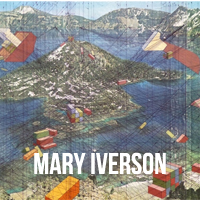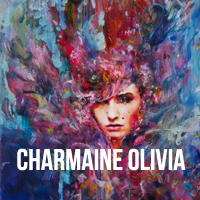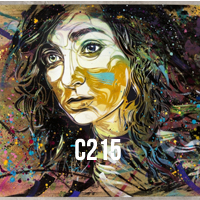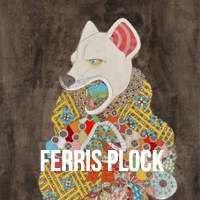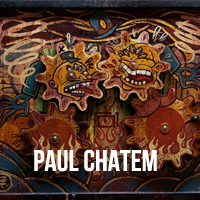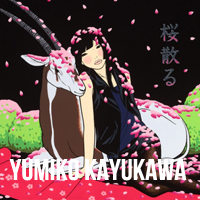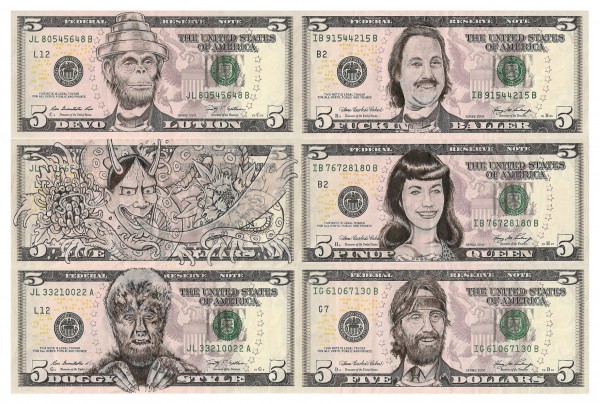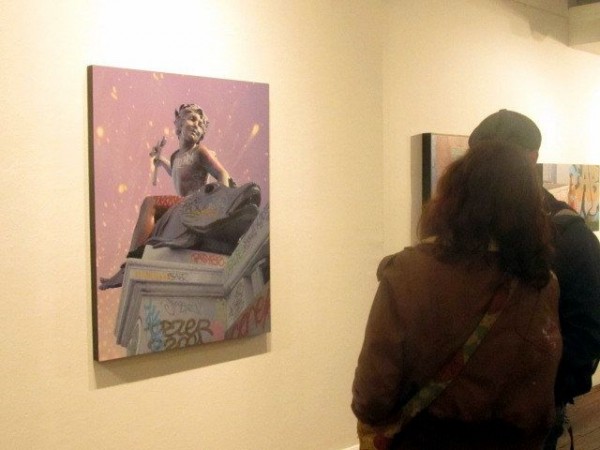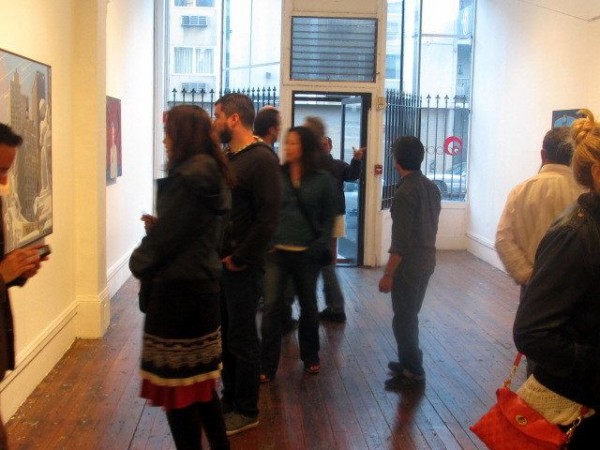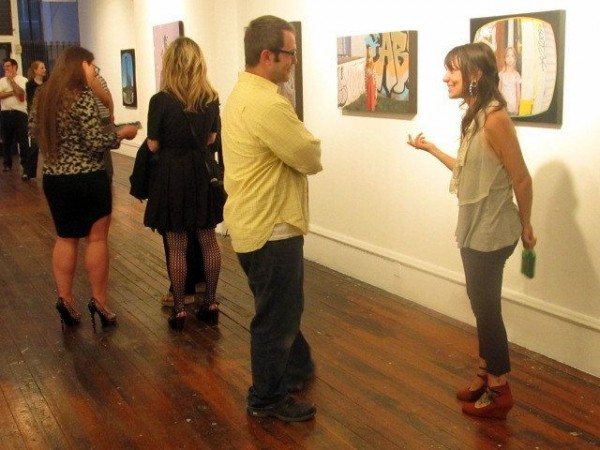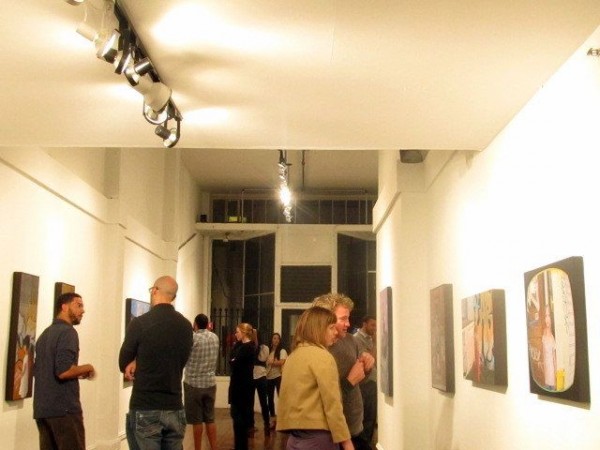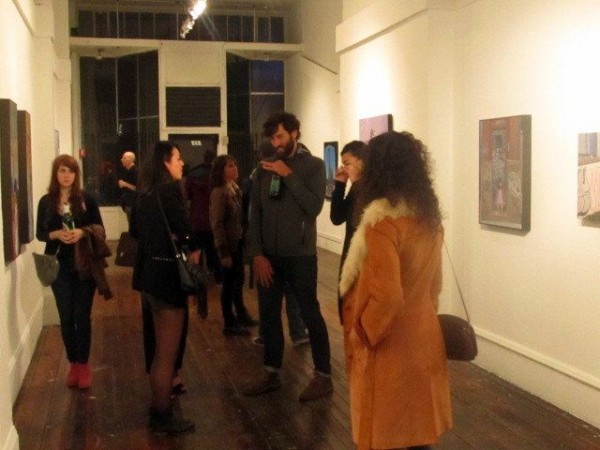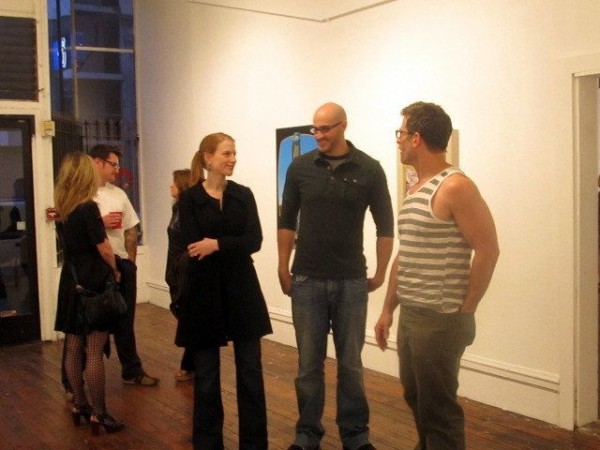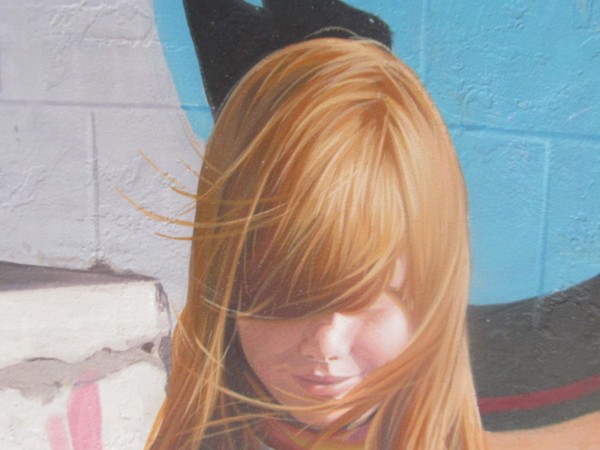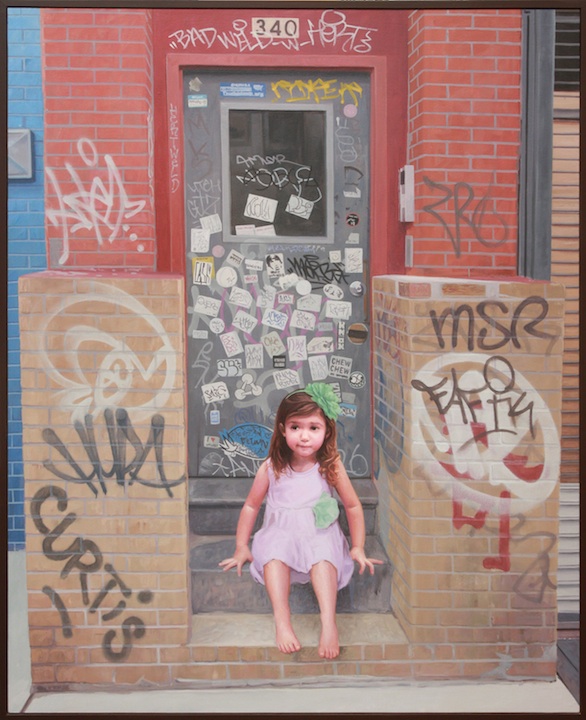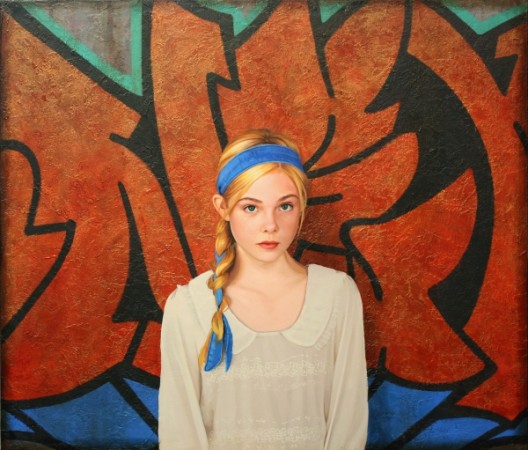
Houston-based painter, Kevin Peterson, answers some questions his latest show “Prospective” stirred up in us:
You refer to the pillaring figures in street art – Banksy, Haring, – in your paintings. How is their graffiti being used in your paintings? As a nod to a respectable art form, or as the back-drop for an eroding society? Is graffiti a cause or symptom of the state of our urban environment?
That is kind of a difficult question for me. I first started using graffiti in my backgrounds because I was trying to set a certain mood. I wanted a background that looked urban, run-down, and abandoned. I was trying to create a setting where you wouldn’t normally see a well dressed child alone. Overall, I really like graffiti and street art. I think it gives our environment character and makes the urban landscape more interesting. I know that some people would disagree and call it a nuisance. The lawless and defiant aspect of graffiti is partly what makes it great and such a fascinating part of our society.
You use children as subjects to represent the innocence lost in urban childhoods. Why do you strongly prefer girls over boys to convey this message?
I think the main reason is the innocence and purity a girl possesses as a child, sort of uncorrupted. Not to say that boys don’t have that as well, but I’ve just found that the contrast often works better with a female. I’ve completed several pieces with boys as the subject and they have worked out pretty well, but boys are often times more boisterous and rowdy. Maybe it’s because I was a little boy once and it’s hard to think of a time when I was pure and innocent. I know that I was, that we all were when we were young, it just starts to feel so far removed as adults. Not that we all become monsters or anything, it’s just that we build walls and create coping mechanisms that bury our innocence.
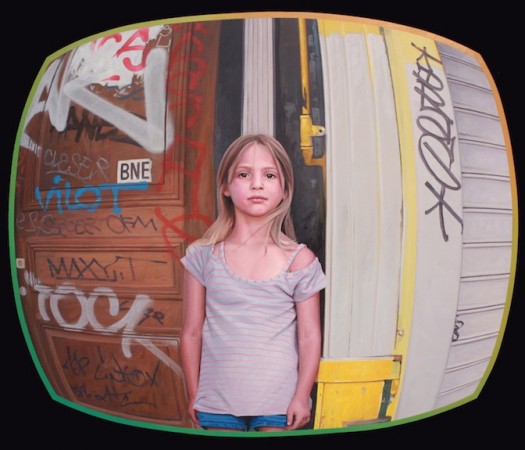
What is your process like? Do you work from photographs? Do you ever paint the background in situ? Are any of your models painted in a studio, or are these a conflation of photographic images?
Yes, I always work with photo references. I often take photos of urban environments and alter them in certain ways using sketches or Photoshop. All of the painting is done in my studio. The child or figure is not necessarily photographed in the environment, but at a separate time and place. I often compile different photos to create a new composition. My paintings usually take tons of hours to complete and kids are not very good at staying still so photos are important.
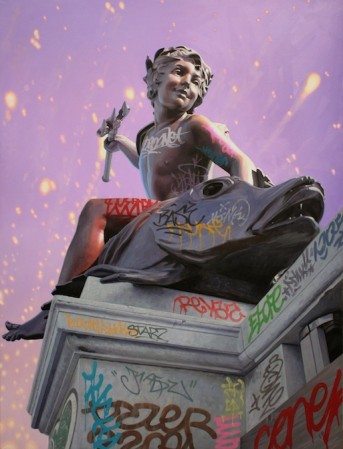
You’re known for your hyper-realistic style, but some of your paintings also have fantastical elements in them – such as the shooting stars with the statues. Are these just a brief departure from your brand of realism?
My style is quite realistic, however, I very rarely paint a scene or situation that actually occurred or exists in the real-world. The great thing about painting is that you are not limited to reality. Things can be manipulated or altered to get a point across. I always loved that Picasso quote, “art is a lie that makes us realize truth”.
How are the shooting stars to be interpreted within the scope of your work? Were they inspired at all from the Aquarid and Lyrid meteor showers that occurred earlier this year?
I guess in a way, yes. In a lot of ways my work is about time. How things change. How we change over time and the environment around us changes as well. At one point the backgrounds in my work were new- they were untouched and pristine, now they are old and abused. The children are new but they will one day be old and abused. It happens to us all. Time changes everything. I recently saw a TV show discussing meteors. They are hitting Earth constantly. They are usually small and often hit the ocean so are rarely noticed. Every 70 or 80 million years a huge one comes along. The last big one hit 65 million years ago and took out the dinosaurs. So, it’s almost time for another one. You know- within the next few million years.
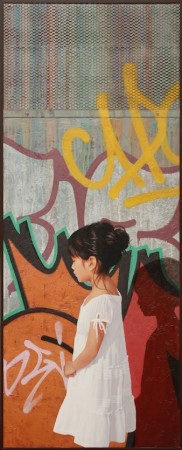
You mention that you recently have been addressing childhood memories through your work, is that why young children are often your subjects? Or was it through painting children that your own memories of that age started to surface?
I really started painting children after I finished an alcohol/drug treatment program. They really forced us to examine our past so I did. Everybody in the program had to do it and so I got to hear from a lot of different people about their pasts. I found it really interesting to examine how childhood memories and experience effects our development. We all experience traumas at some point growing up. It’s nothing to be afraid of or bury. It makes us who we are. It often makes people stronger and more resilient than you could ever think possible.
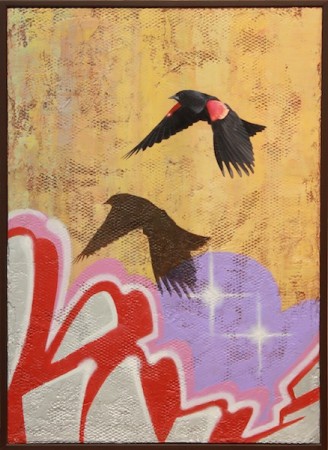
Alongside a degree in Fine Art you have a degree in psychology. Do you think that this helps you create work that stirs an emotional response in its viewers? Should art, like psychology, be used to shine light on the human condition or do you think it serves a distinct purpose?
It’s always my goal to create art that elicits an emotional response. Do I think studying psychology helped? Yeah, it probably does. I think it is important to reflect on ourselves as well as others in different situations. What drives us, why do we become the people we do? That reflection is important but doesn’t require any degree. I would hesitate to say that art “should” or “should not” do anything. My favorite art tends to deal with our emotions or psychological states so I am inspired to attempt to do the same with my work.


